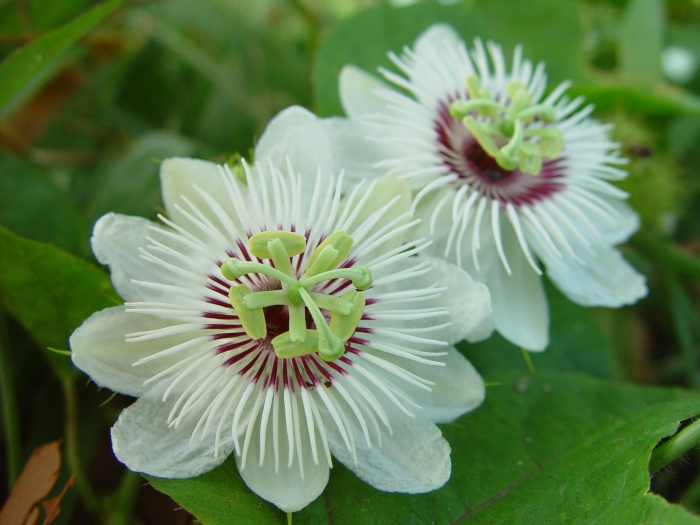Stinking Passionflower
(Passiflora foetida)
Stinking Passionflower (Passiflora foetida)
/
/

Leon Brooks
Public domain





















































Estimated Native Range
Summary
The Stinking Passionflower is valued for its rapid growth, unique flowers, and edible fruit. It is used in tropical and subtropical gardens for ornamental purposes, often grown on trellises or fences. It requires full sun to part shade, medium water, and well-drained soil to flourish. While it can be a beautiful addition to a garden, Passiflora foetida is potentially invasive in some regions, such as Southeast Asia, Australasia, the Caribbean, and parts of the United States, where it can outcompete native flora. Gardeners should be cautious and check local regulations before planting.CC BY-SA 4.0
Plant Description
- Plant Type: Vines
- Height: 9-13 feet
- Width: 6-8 feet
- Growth Rate: Rapid
- Flower Color: Pink, Purple, White
- Flowering Season: Summer
- Leaf Retention: Deciduous
Growth Requirements
- Sun: Full Sun, Part Shade
- Water: Medium
- Drainage: Fast
Common Uses
Bee Garden, Bird Garden, Butterfly Garden, Deer Resistant, Drought Tolerant, Edible*Disclaimer: Easyscape's listed plant edibility is for informational use. Always verify the safety and proper identification of any plant before consumption., Fragrant, Hummingbird Garden, Showy Flowers
Natural Habitat
Native to tropical and subtropical regions
Other Names
Common Names: Wild Maracuja , Bush Passion Fruit , Fetid Passionflower , Wild Water Lemon , Stoneflower , Love-In-A-Mist , Scarletfruit Passionflower , Stinking Passionflower , Mossy Passionflower , Running Pop
Scientific Names: Passiflora foetida , Passiflora foetida subsp. hispida , Passiflora foetida var. lanuginosa , Passiflora foetida var. hastata , Passiflora foetida var. isthmia , Passiflora foetida var. longipedunculata , Passiflora foetida var. mayarum , Passiflora vesicaria , Passiflora foetida var. galapagensis , Passiflora liebmanni
GBIF Accepted Name: Passiflora foetida L.